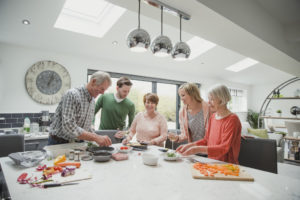Most property owners are now focused on getting the best interior and exterior looks. As such, properties and no longer purely functional. For most, getting exceptional looks means hiring an interior décor expert and landscaper. Even so, there is a way you can minimize the costs that come with hiring these experts and still get a property that looks exceptional.
Your answer lies in getting a dealer that specializes in kitchen cladding services as well as cladding the other walls of your property. Cladding denotes a decorative wall covering that layers your existing wall. The common material alternatives for the cladding of indoor and outdoor walls include glass, stone, timber, aluminum, and ceramic. The leading option for most homes is stone. This generates an inviting look and gives your home some sense of history. Moreover, the stone will also insulate your interiors and minimize the loss of heat to the outdoors. You can use stone cladding for an accent wall, bathroom and kitchen backsplash, an entire room, or your exterior walls. The following are the installation techniques for the cladding onto your walls.
Direct-Adhered
Here, the cladding will be placed directly onto your wall and stuck in place using glue, cement, or a specialized adhesive. With the direct-adhered technique, an installer can use thin stone cladding without affecting the final look you get. The process is quick and inexpensive. The method nonetheless only works best for interior walls. This is because these are shielded from the exterior elements that might affect the functioning of the adhesive. These elements contribute to the premature failure of your cladding.
Spot Bonding
This, like the direct-adhered technique, will use an adhesive to stick the stone cladding onto your walls. Even so, the adhesive, in this instance, is only applied to about 10% of the installation area. This way, there are gaps left between the cladding to allow water and air movement. This reduces water damage and staining to your substrate. Spot bonding is nonetheless a bit more costly compared to direct adhering because it uses strong specialized epoxies in place of glue.
 Mechanical Bonding
Mechanical Bonding
This is the ideal choice for exterior stone cladding. It uses anchors embedded in your walls to support the cladding. Since holes will be drilled into your cladding to be tied using mechanical ties to the anchors, the stone cladding used in this case should be adequately thick and strong. The ideal cladding is one with a minimum thickness of one inch. A 3/4-inch gap is left between your walls and the cladding to promote water drainage and air movement.
Aluminum Backing
Here, structural support for installation comes from aluminum panels attached to your wall using runner clips. The stone cladding pieces are then mounted to these panels. The panels are often interlocked to generate a seamless cladding appearance. Though inexpensive, aluminum backed installation only supports lightweight stone cladding.
If you want a durable and inexpensive option for upgrading your walls, the above installation techniques for stone cladding are your solution. Moreover, they will increase your property value more than wallpaper and other wall décor methods will. This is in addition to protecting your underlying wall.

